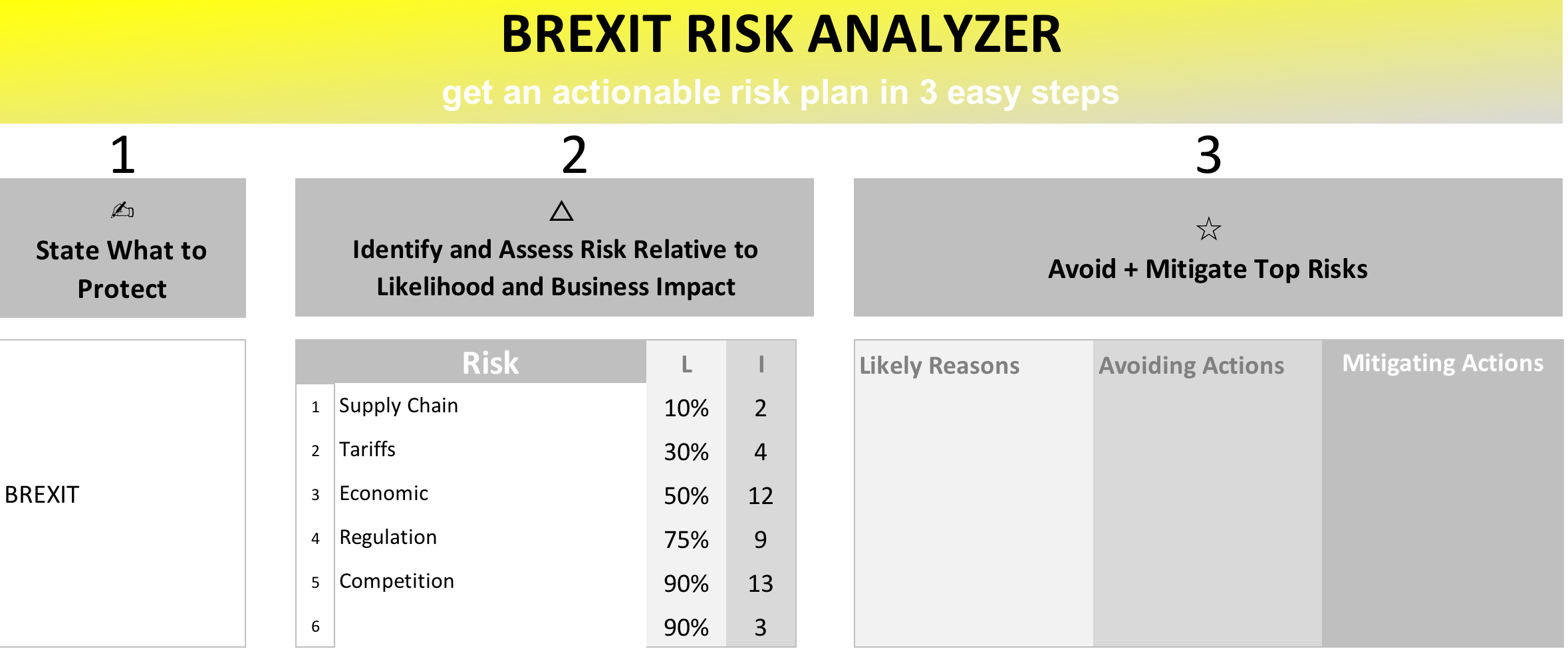
In almost every company I have worked with these 5 strategy killers (i.e. obstructions) tend to emerge and need to be addressed because they undermine business from practically developing and using strategy as an effective decision making tool to deliver results. Examine the list below to see if your company may need to remove or address the following obstacles:
KILLER #1: Strategy Planning Has Become Too Complex
If you believe curiosity killed the cat, then complexity is killing strategy in organizations. Not because of the size or breadth of the company, but the felt need that strategy should be complex, should involve multi-page, multi-concept, multi-meeting reports or presentations.
Executives who lead organizations today have less time, too much information, and not enough soak time to process the critical few data points. Further, the strategy planning cycle in companies starts so early and has become so operational that most executives we talk to recognize that it no longer serves them or cascades aligned decision making down to those at the market level to make effective decisions. Making strategy simpler is key.
Strategy or making the big decisions on products, markets and capabilities - centers around a few criteria and goals that need to be made visible, measurable and used. Companies - can start by reducing the complexity by ensuring they have 3 one page documents
-
Strategic Assumptions - outlying the 3-5 critical assumptions and internal implications they have on products, market and technology
-
Product Market Matrix - a matrix that lists criteria and shows relative priority for each cell along with the supporting financials
-
Strategic Goals - no more than 3 goals ( with clear metrics, targets, and data source) for any one calendar year that everyone in the company is focused and connected to - no matter what size your company
With these 3 one pagers - you can manage and monitor your business and make the critical decisions - or importantly ask the vital questions.
KILLER #2: All Executives are Naturally Experts at Strategy
Not every executive or even CEO is born with a strategic silver-fork in his or her mouth. If you think about it or even your own career path – many executives get little formal strategy exposure to really hone "what they think when they think about strategy" – other than a course or two in school. It sometimes seems that if you are an executive you must be a great strategic thinker.
In practice, most executives have earned their stripes and experience as a functional leader (e.g. VP of “ marketing, sales, logistics, HR, finance, manufacturing). They get very good at this operational part of thinking and making things work – they are expert doers – but are not tasked consistently with working the strategic side of their brain.
While some executives have the gift of vision or the uncanny ability to see the future unfold for products, markets and capabilities, many do not – and that’s okay – but by observing the tendency of your executive team you can quickly pinpoint who is more strategic (WHAT) vs. operational (HOW) – and leverage these differences, build new competencies resulting in more meaningful debates, discussions and decisions.
KILLER #3. There is No Need to Define Strategy
Every time I work with CEO’s and their leadership teams – in the first 10 minutes of the first day as we introduce ourselves and outline what we will be doing over the next few work sessions together – I immediately ask one question to the group:
What is your definition of strategy?
Often as I look out at the executives pondering this question – I see many rolling their eyes or checking their watch.
What happens next – I ask each executive to take out a piece of paper and write his or her definition for strategy. Apart from the heavy sighs and blank stares, they take a couple of minutes and write it out and then post it to the wall, visible to all.
As the 12 executives post their definitions, I ask them to take a quick review of their co-leader's definitions – and remind them of the 100’s or 1000’s below them that they manage, and the stark realization hits of the 12 executives in the room - NO TWO definitions are the same.
In fairness, many have similar points or themes but they realize when they use the word STRATEGY in day-to-day conversations, meetings and retreats – they are not really talking about the same thing. Lack of a common definition creates misunderstandings that can be avoided.
The point is I don’t want to legislate what your company defines as strategy, but to ensure you define at the most basic level for yourself, your leadership team, and company what strategy is. You will be astonished at how the communications and conversations change for the better.
Killer #4. CEO’s Outsource Strategic Thinking to Consultants
I am not the first to say this so don’t be too surprised, but the only successful strategy is one that gets implemented and achieves the goals that were set. I believe it is a known, if not much talked about, fact that when companies are wanting to refresh or develop a strategy for future growth –
“the CEO and his executives team already know about 80+% of the issues that need to be addressed and about 80+% of the solutions that will work in their company.”
While there are many sound reasons to bring in outside consultants – e.g. objectivity, framing issues, methodologies, catalysts for change, filling knowledge gaps, etc. - I do not believe that any company should outsource their strategic thinking.
Strategic thinking for your business is a sacred set of activities because you are defining the framework of choices that determines the your purpose, your path and your priorities. For results to take hold executives need to author and own the thinking – so don’t outsource it.
KILLER #5: Strategy is Viewed as an EVENT rather than a PROCESS
Many companies make the mistake of treating strategy as an annual event or a 2-day retreat, and leave it off the agenda for the “rest of the year” because they are busy.
This event-driven mentality serves to reinforce strategy as a distant competency, one that really does not take center stage to drive daily decision making of everyone in the company. Further, it serves to reinforce the ideas that strategy is something UP THEIR done by executives and “down here” we just doing our work.
Effective strategy is a thinking / deciding / doing activity – it’s making and implementing decisions around products and markets, it is building the future need capabilities for the organization - all against the backdrop of the competition and needs of the customer. Those decisions create the edge that drives above average or double digit EBITDA.
To do this, it means you have to test what you created or decided on based on data, and necessarily make mid-course corrections. To make strategy a process - quarterly checkpoints on issues blocking performance must be raised and finding the cause behind them (both positive and negative gaps) is the charge of the team during these 4-a-year meetings.
The good news is each of these “strategy killers” can be fixed. If you would like more information on any of these barriers please contact me at your convenience.
Check your Strategy:





